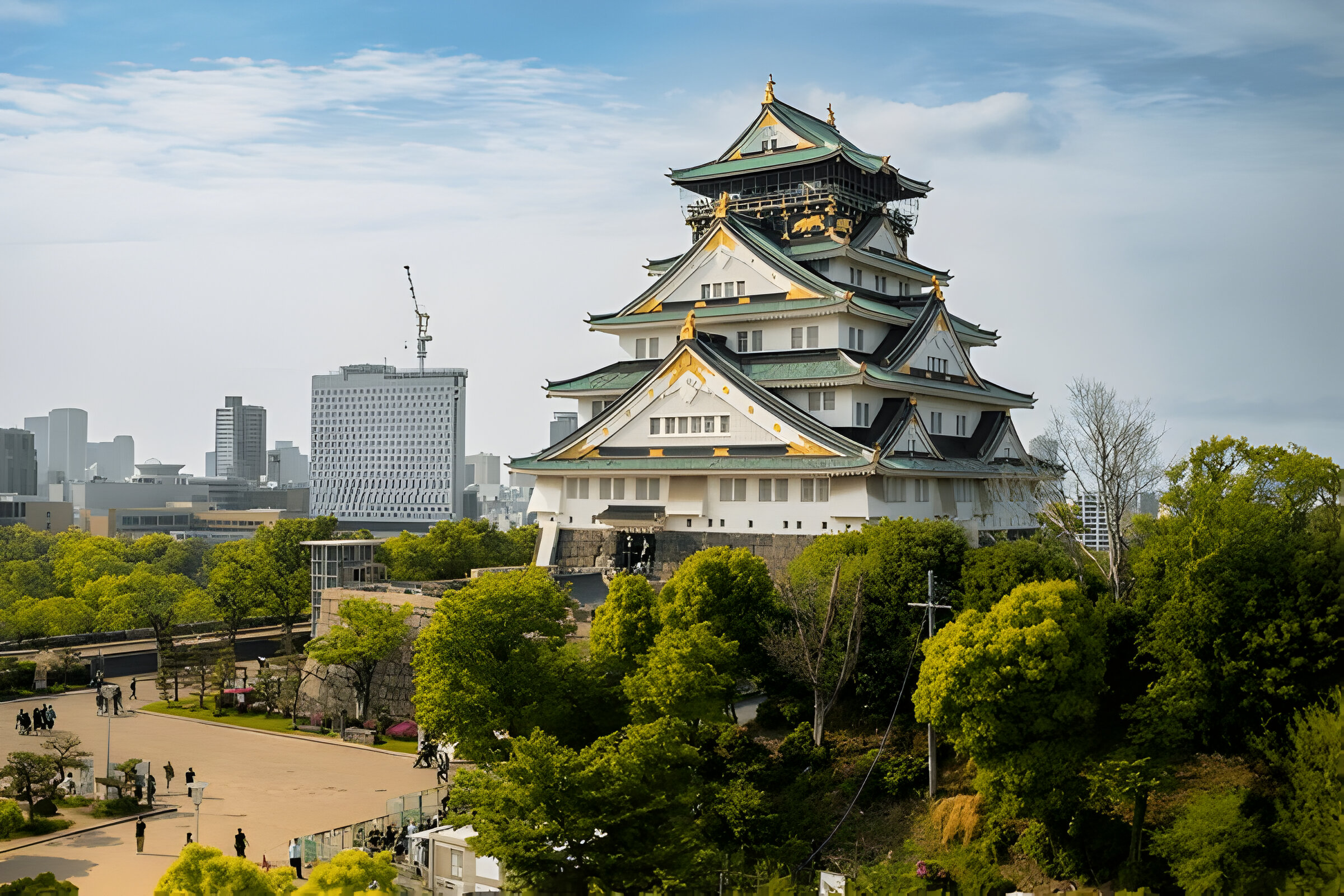The Ultimate 10 Day Japan Itinerary for first timers –
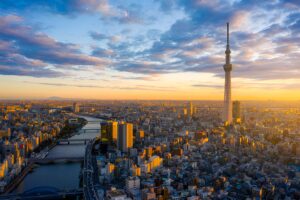
Your first trip to Japan is going to be full of excitement and unforgettable experiences! Japan’s blend of futuristic cities, serene temples, and exquisite cuisine makes it one of the most rewarding countries to explore. Planning can feel overwhelming, though, especially if you want everything to be perfect. That’s why we’ve put together The Ultimate 10-Day Japan Itinerary—to make sure you hit all the major spots, soak in Japan’s beauty, and leave with a heart full of memories.
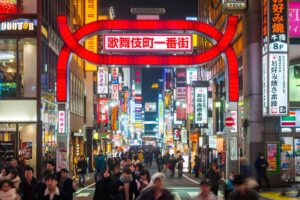
This 10-day itinerary starts and ends in Tokyo, the gateway for most international travelers, and takes you on a journey through Kyoto, Osaka, Nara, Hiroshima, and some amazing day trips in between. For ease of travel and to save some cash, I booked my Flight tickets early. For this, I used Skyscanner. They compared all the flights and gave me the best one at a cheap price. Highly recommended. Let’s dive in!
Preparation Beforehand: 10-Day Japan Itinerary
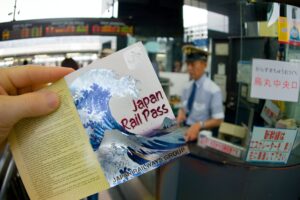
Japan is all about exploration—from bustling cities to picturesque countryside. To make the most of your time, consider getting a Japan Rail Pass (JR Pass) or a JR Regional Pass. The JR Pass allows unlimited travel on JR trains, including the Shinkansen (bullet train), making it the most cost-effective way to travel between cities.
Pro Tip: Purchase your JR Pass before you arrive in Japan, as it’s only available to foreign tourists and must be booked in advance.
Important Preparations:
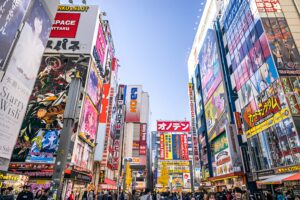
- Portable WiFi or SIM Card: Essential for navigation and keeping connected.
- Check Weather: Japan’s climate varies; understand whether it’s the rainy or typhoon season during your visit.
- Luggage Storage Options: Japanese stations often have lockers, but pack light to move around easily.
Best Time to Visit Japan
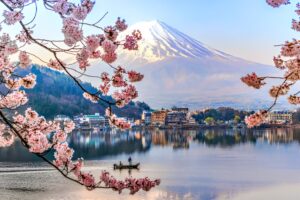
The best time to visit Japan largely depends on your preferences and what you’d like to experience. Each season offers its own unique charm:
- Spring (March to May): Famous for cherry blossom season, this is one of the most popular times to visit. The weather is mild, and the country is awash in pink blooms.
- Summer (June to August): While it can be hot and humid, summer offers vibrant festivals and fireworks displays.
- Autumn (September to November): Another popular time, with comfortable temperatures and stunning fall foliage.
- Winter (December to February): Ideal for winter sports enthusiasts and those who want to experience Japan’s hot springs (onsen) surrounded by snow.
For first-timers, spring or autumn are often recommended for their pleasant weather and beautiful scenery.
Getting Around Japan
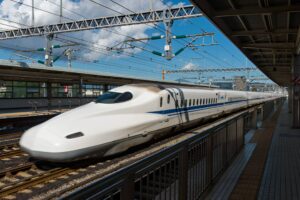
Japan Rail Pass
The Japan Rail Pass (JR Pass) is a must-have for most first-time visitors planning to travel around the country. It offers unlimited rides on JR trains, including the high-speed Shinkansen (bullet train), for a fixed price. For this 10-day itinerary, the 7-day JR Pass is usually the most cost-effective option. Japan’s raily way system is on a whole different level. It was one of the best decisions to make to travel across the city by train.
Local Transportation
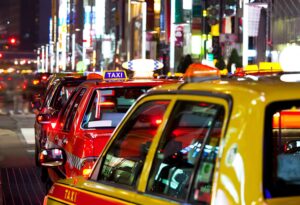
In major cities like Tokyo, Osaka, and Kyoto, you’ll find extensive and efficient public transportation systems. Subways and buses are convenient for getting around within cities. Consider getting an IC card (like Pasmo or Suica) for easy payment on public transport. If you have an international driving license, then you can rent a car. This will be handy in remote areas. You can use Skyscanner for this. They also provide car rental services. But I don’t recommend renting cars inside cities. Mejor cities have a lot of traffic. So public transport is the best option.
The Ultimate Japan 10-Day Itinerary Overview
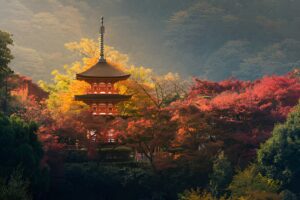
Here’s a quick glance at our 10-day Japan itinerary:
- Day 1-3: Tokyo
- Day 4: Day trip from Tokyo (Hakone or Nikko)
- Day 5-6: Kyoto
- Day 7: Nara and Osaka
- Day 8: Hiroshima and Miyajima
- Day 9-10: Back to Tokyo
Now, let’s dive into the details of each day!
Day 1: Arrival in Tokyo – Welcome to Japan!
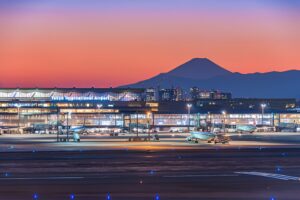
Welcome to Tokyo! Your first day in Japan is all about adjusting to the new environment, soaking in your first sights of this vibrant city, and getting some well-deserved rest after your flight. Tokyo is a bustling metropolis filled with neon lights, cultural landmarks, and bustling streets—it can be a bit overwhelming at first, but today we’ll ease you into the experience. In my case, I loved the environment of Japan.
Arrival: Navigating to Central Tokyo
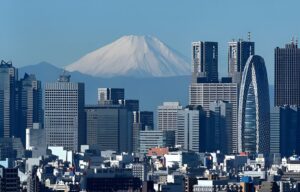
Whether you arrive at Narita or Haneda Airport, your main focus today should be getting settled in. From Narita, take the Narita Express or an Airport Limousine Bus into central Tokyo, while Haneda is closer and accessible via the Tokyo Monorail or a direct train. Either way, you’ll be in the city within 1-1.5 hours. It was enjoyable in my case. What I noticed was people don’t focus on other people that much. But if you ask for help, they will gladly help you. I also find Japanese people very polite.
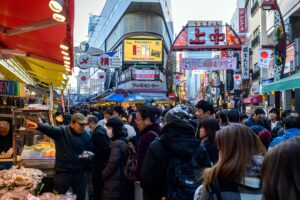
Once you reach your accommodation, take some time to check in, drop off your luggage, and freshen up. If you’re staying in a bustling area like Shibuya, Shinjuku, or Asakusa, you’ll already be right in the heart of the action. I book the hotel in advance. I knew it would be a long flight, so I didn’t want to hassle through the city to book my hotel. I use Skyscanner to find a hotel that is best suited for my budget and comfort.
Afternoon: First Taste of Tokyo
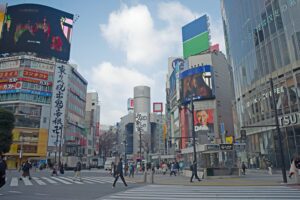
After settling in, begin exploring the area around your hotel. Walk around Shibuya or Shinjuku and absorb the energy of Tokyo’s urban life. Take your time, especially if you’re feeling jet-lagged. A leisurely walk will allow you to ease into the city’s vibe.
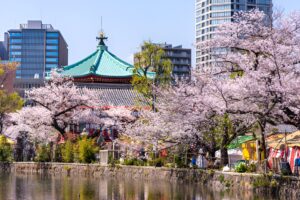
If you’re staying in Asakusa or near Ueno, visit Ueno Park for a gentle introduction to Japanese gardens, small shrines, and people-watching opportunities. If you’re near Shinjuku, Shinjuku Gyoen National Garden is a serene spot perfect for unwinding after your flight. It’s also ideal for a relaxing stroll, offering beautiful seasonal flowers and quiet paths. This park was really refreshing for me. I didn’t notice the time while I was here. It has a calm feel to it.
Evening: Iconic Tokyo Experience
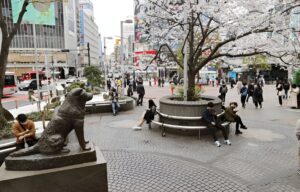
If you can, make your way to Shibuya Crossing for an unforgettable experience at one of the busiest pedestrian crossings in the world. Stand on the corner and watch as the lights change and hundreds of people make their way across—it’s a perfect introduction to the organized chaos of Tokyo. Visit the nearby Hachiko Statue, a symbol of loyalty and a popular meeting spot.
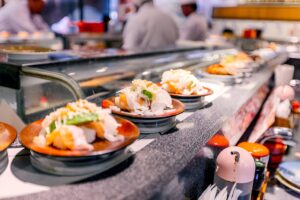
For dinner, ease into Japanese cuisine at a casual spot. If you’re near Shibuya, head to a conveyor belt sushi restaurant like Genki Sushi or enjoy a comforting bowl of ramen at Ichiran. If you’re staying in Shinjuku, consider visiting Omoide Yokocho (Memory Lane), where you can find small, atmospheric izakayas offering grilled skewers and other Japanese delights. You see, I’m a big anime fan, so trying out Ramen was a must for me. I enjoyed it so much. I realized the ramen I had before wasn’t close to what they had prepared for me.
Night: First Impressions of Tokyo’s Nightlife
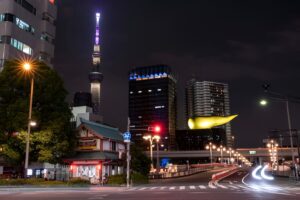
Depending on your energy level, end your first day with a visit to either Tokyo Tower or Tokyo Skytree. Both provide spectacular views of the city, but Tokyo Tower also offers a nostalgic charm reminiscent of the Eiffel Tower, whereas Tokyo Skytree is ultra-modern with a bustling shopping area beneath it called Solamachi.
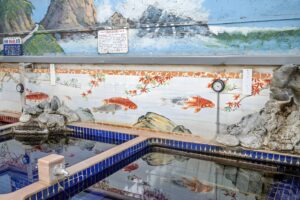
If you’re looking for relaxation after your flight, consider visiting a sento (public bathhouse) near your accommodation. Many neighborhoods have a local sento where you can soak in hot water, wash off the travel fatigue, and experience a unique part of Japanese culture. This was a unique experience for me. If you are too shy, then wait for a bit to get a pretty much empty bath house.
Tips for Your First Day in Tokyo:
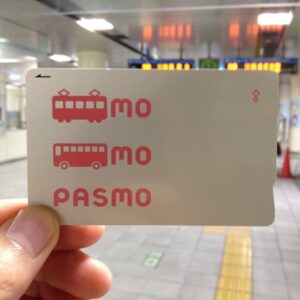
- Hydrate and Adjust: Traveling can be exhausting, especially with time zone differences. Stay hydrated and take breaks to help your body adjust.
- Use an IC Card: Get a Suica or Pasmo card at the airport or any major train station. This rechargeable card works for trains, buses, and even at many convenience stores, making your travel throughout Tokyo smooth and convenient.
- Convenience Store Meals: Don’t underestimate Japan’s convenience stores like 7-Eleven, Family Mart, and Lawson. They offer a variety of fresh and delicious foods like onigiri (rice balls), bento boxes, and drinks, which can be perfect if you’re not ready for a full sit-down meal.
Summary for Day 1:
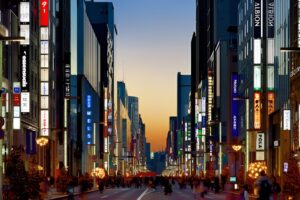
- Arrival and Transfer to Hotel: Use Narita Express or Tokyo Monorail.
- Relax and Explore: Walk around your local neighborhood, visit nearby parks.
- Shibuya Crossing or Local Landmark: Experience the essence of Tokyo’s energy.
- Dinner: Enjoy a casual introduction to Japanese cuisine.
- Optional Evening Activity: Tokyo Tower/Skytree or a local sento for relaxation.
Day 2: Exploring Tokyo’s Vibrant Side: Shibuya and Harajuku
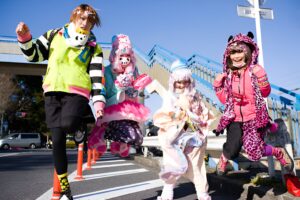
Today, you’ll explore Tokyo’s lively west side—specifically the bustling districts of Shibuya and Harajuku, where youth culture, fashion, and vibrant street life collide.
Morning: Shibuya’s Bustling Energy
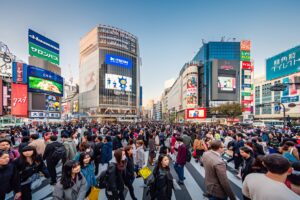
Begin your day at the world-famous Shibuya Crossing, often called the busiest pedestrian crossing in the world. The sea of people, neon billboards, and towering screens make for a mesmerizing experience. I was a bit shocked. I saw this crossing on TV, but experiencing this firsthand was epic. You will find people crossing the road in unison. There were a lot of people but no clash.
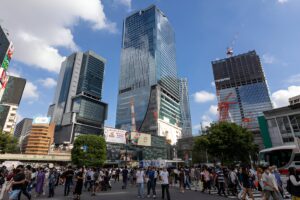
- Shibuya Scramble Square: Head to Shibuya Scramble Square, a new complex filled with shops and restaurants, and go up to Shibuya Sky for panoramic views of the city. It’s the perfect spot to see Tokyo’s vast urban sprawl.
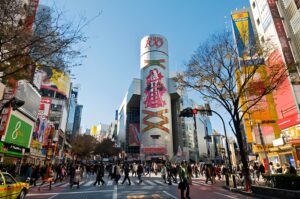
Dive into the unique boutiques at Shibuya 109 or hunt for quirky souvenirs at Don Quijote. Don’t forget to grab some street snacks from nearby food stalls to keep your energy up.
Afternoon: Fashion and Food in Harajuku
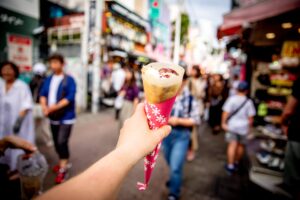
Next, head to Harajuku’s Takeshita Street. This is a lively shopping street where you’ll find eccentric fashion stores, vintage clothing, and plenty of street food, like crepes and rainbow cotton candy. After I ate some street food I realized, that Japanese street food is different. It’s fast food but feels homemade and fresh.
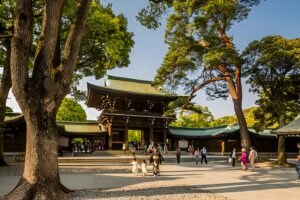
Take a break from the energy of Takeshita Street by stepping into the tranquil oasis of Meiji Shrine. This peaceful Shinto shrine, surrounded by lush trees, is dedicated to Emperor Meiji and Empress Shoken. This shrine was pretty peaceful. Also, don’t do anything that disrespects the culture. In my case, I Observe the locals to understand their customs.
Evening: End the Day with Yoyogi Park and Izakaya Hopping
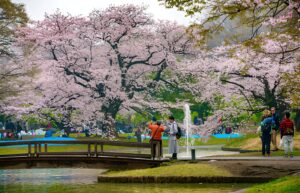
- Yoyogi Park: If the weather permits, stroll through Yoyogi Park, which is right next to Meiji Shrine. It’s a great spot for people-watching and a relaxing walk. All the parks I visited in Japan were calming and relaxing. I think They build them in that way.
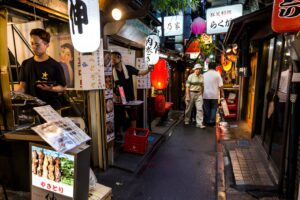
Finish your day with a meal in Shibuya or head to Shinjuku’s Golden Gai, a tiny bar district filled with character. Each bar seats just a handful of people, offering a cozy and intimate dining experience.
Day 3: Traditional Tokyo – Ueno and Asakusa
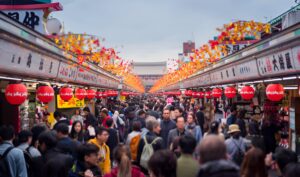
Today, immerse yourself in the traditional side of Tokyo, where culture, history, and serenity combine.
Morning: Exploring Ueno’s Cultural Gems
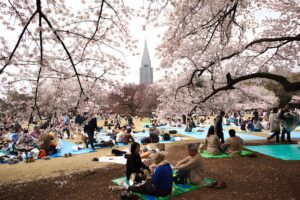
Start your day at Ueno Park, home to several important museums like the Tokyo National Museum and the Tokyo Metropolitan Art Museum. The park also features lovely temples and the famous Ueno Zoo.
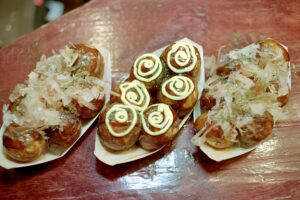
Wander through Ameyoko Market, located just outside Ueno Station. This bustling market street has vendors selling everything from fresh seafood to sweets. Try some takoyaki (octopus balls) or karaage (Japanese fried chicken) for a tasty snack.
Afternoon: Ancient Asakusa and Sumida River
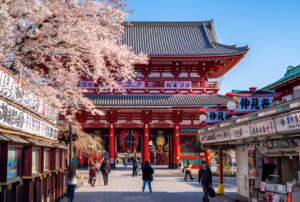
Make your way to Asakusa, where you’ll find Senso-ji, Tokyo’s oldest and most famous temple. The iconic red lantern and beautiful temple grounds are must-sees. Along Nakamise Street, grab souvenirs and traditional snacks like senbei (rice crackers).
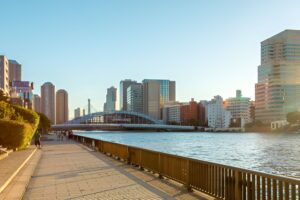
- Sumida River Walk: Take a walk along the Sumida River. During spring, this is one of the best places to see cherry blossoms lining the riverbanks.
Evening: Tokyo Skytree Adventure
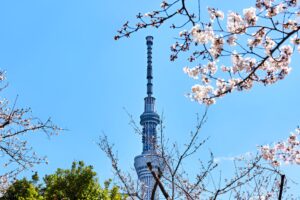
- Tokyo Skytree: Finish your day at the Tokyo Skytree, the tallest structure in Japan. Take an elevator to the observation decks for a breathtaking view of the city lit up at night. Dine at Tokyo Solamachi, the shopping complex at the base of the Skytree, which offers various restaurants with a view.
Day 4: Day Trip from Tokyo – Mount Fuji and Hakone
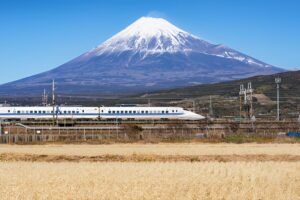
Take a day trip from Tokyo to experience the beauty of Mount Fuji and Hakone, perfect for relaxation and scenic vistas.
Morning: Traveling to Hakone
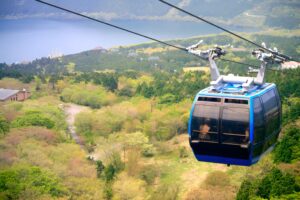
- Hakone Adventure: Start early and take the Romancecar train to Hakone. Use the Hakone Free Pass to get around the area. Begin by taking the Hakone Ropeway up to Owakudani, an active volcanic zone known for its sulfur springs and black eggs boiled in the hot waters. Highly recommended.
Read Our Blog to know more about Top Things to Do in Hakone Japan
Afternoon: Cruise on Lake Ashi
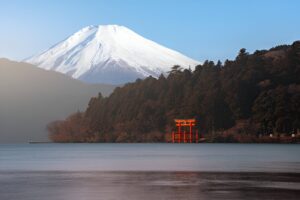
- Lake Ashi Cruise: Enjoy a scenic cruise on Lake Ashi, with beautiful views of Mount Fuji in the background. If the skies are clear, you’ll have spectacular photo opportunities of Japan’s most famous mountain. The view was something else for me.
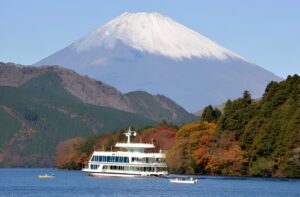
- Hakone Shrine: After the cruise, visit the iconic Hakone Shrine, marked by its stunning torii gate standing in Lake Ashi.
Evening: Onsen Relaxation
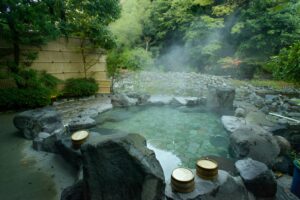
- Relax at an Onsen: Cap off your day by soaking in one of Hakone’s famous onsens (hot springs). Many ryokans (traditional inns) offer day-use passes if you’re not staying overnight. Return to Tokyo in the evening relaxed and recharged.
Day 5: Kyoto – The Cultural Heart of Japan
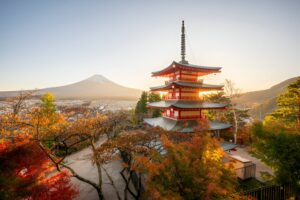
Say goodbye to Tokyo and catch an early morning shinkansen (bullet train) to Kyoto—a journey that takes around 2.5 hours.
Morning: Arashiyama’s Bamboo Groves
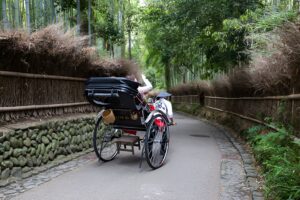
- Arashiyama Bamboo Grove: Begin your Kyoto adventure in Arashiyama. Walk through the iconic Bamboo Grove, a serene path surrounded by towering bamboo stalks. Visit Tenryu-ji Temple, a UNESCO World Heritage Site, known for its stunning garden.

- Monkey Park: For a unique perspective, hike up to the Iwatayama Monkey Park, where you can see both Kyoto and playful monkeys roaming freely.
Afternoon: Golden Pavilion and Traditional Tea in Uji
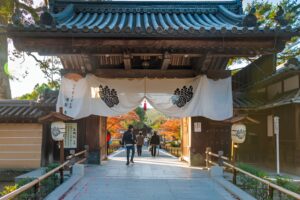
- Kinkaku-ji (Golden Pavilion): Visit Kinkaku-ji, one of Kyoto’s most famous temples. The glimmering golden facade reflected in the pond is a breathtaking sight.
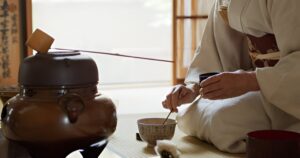
- Uji Tea Ceremony: Head to Uji, a town famed for its green tea. Participate in a traditional tea ceremony and visit Byodo-in Temple. Stroll through tea shops and try green tea-flavored sweets.
Evening: Dinner by the Kamo River
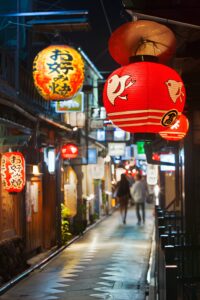
- Pontocho Alley: In the evening, head to Pontocho, a narrow alley along the Kamo River lined with restaurants. Enjoy a kaiseki meal while overlooking the river—a truly Kyoto experience.
Day 6: Kyoto and Nara
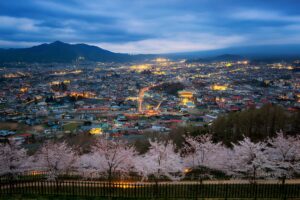
Today, we’ll explore more of Kyoto in the morning before heading to Nara for an unforgettable afternoon with the famous deer and historical sites.
Morning: Kyoto’s Early Wonders
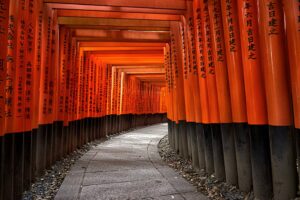
- Fushimi Inari Taisha: Begin your day with a visit to Fushimi Inari Shrine, the famous shrine known for its thousands of vermilion torii gates. Arrive early to avoid the crowds and capture some truly iconic photos as you hike the paths leading up the mountain.
Personal Tip: “Wandering under those red torii gates, with sunlight filtering through the trees, was a magical moment that made me feel connected to Japan’s ancient traditions.”
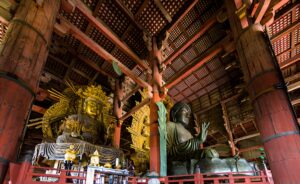
- Kiyomizu-dera Temple: Next, head to Kiyomizu-dera, one of Kyoto’s most celebrated temples, known for its large wooden stage that juts out from the main hall. Enjoy panoramic views of Kyoto, and take a stroll through the nearby historic streets of Sannen-zaka and Ninen-zaka, lined with traditional wooden shops and tea houses.
Afternoon: Day Trip to Nara
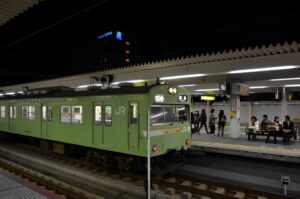
- Travel to Nara: Take the JR Nara Line to Nara—the journey takes about 45 minutes from Kyoto Station.
- Nara Park: Spend the afternoon exploring Nara Park, where you’ll encounter the famous Nara deer. These deer are friendly and accustomed to people; you can even buy special deer crackers (shika senbei) to feed them.
- Todai-ji Temple: Don’t miss Todai-ji, home to the Great Buddha (Daibutsu), one of Japan’s largest bronze statues of Buddha. The temple grounds are expansive, and the architecture is both historic and breathtaking.
- Kasuga Taisha Shrine: If time permits, visit Kasuga Taisha, known for its hundreds of bronze and stone lanterns. The serene path leading up to the shrine is filled with lush greenery, creating a calm and reflective atmosphere.
Evening: Return to Kyoto

- Dinner in Gion: Head back to Kyoto in the evening and have dinner in the Gion District. Consider dining at a kaiseki restaurant or a local izakaya to experience traditional multi-course Japanese cuisine. Walk along Hanamikoji Street for a chance to spot a geisha or maiko on their way to an evening appointment.
Day 7: Nara and Osaka
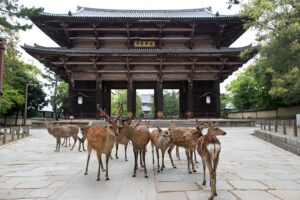
Morning: Take a day trip to Nara, Japan’s first permanent capital. The main attraction here is Nara Park, home to hundreds of freely roaming deer considered to be messengers of the gods. Visit Todai-ji Temple, which houses the largest bronze Buddha statue in Japan.
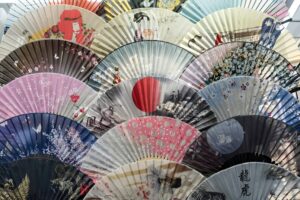
Afternoon: Head to Osaka, Japan’s kitchen and a food lover’s paradise. Make your way to the lively Dotonbori area, famous for its dazzling neon signs and delicious street food. Try local specialties like takoyaki (octopus balls) and okonomiyaki (savory pancake).
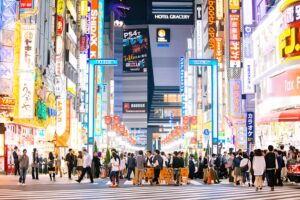
Evening: Visit Osaka Castle, one of Japan’s most famous landmarks. While the interior is a modern museum, the exterior and surrounding park are beautiful, especially during cherry blossom season.
Day 7: Osaka – Food, Fun, and City Vibes
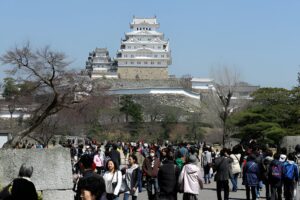
After exploring Kyoto and Nara, it’s time to experience Osaka, Japan’s vibrant city known for its street food and nightlife.
Morning: Osaka Castle
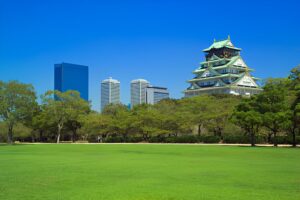
- Osaka Castle: Take the train from Kyoto to Osaka (around 30 minutes). Start your day at Osaka Castle, a symbol of the city with a rich history. Walk around the beautiful castle grounds and explore the museum inside to learn about Osaka’s historical significance.
Afternoon: Dotonbori and Kuromon Ichiba Market
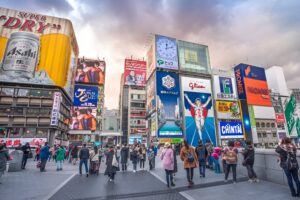
- Dotonbori: Head to Dotonbori, Osaka’s most famous entertainment district, located along the Dotonbori Canal. Snap a photo with the iconic Glico Man sign and take a stroll along the bustling street.
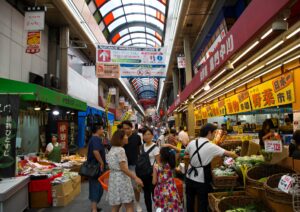
- Kuromon Ichiba Market: Walk over to Kuromon Ichiba Market for lunch. This lively market is the perfect place to try some of Osaka’s signature street foods, like takoyaki (octopus balls), okonomiyaki (savory pancakes), and fresh seafood.
Evening: Shinsekai and Tsutenkaku Tower
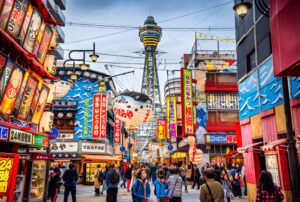
Shinsekai District: Spend your evening in Shinsekai, a retro neighborhood that offers a nostalgic look into Osaka’s past. This district is home to the iconic Tsutenkaku Tower, which offers great views over the city. Try kushikatsu (deep-fried skewers) at one of the local restaurants here for dinner—Osaka is known as the kitchen of Japan for good reason!
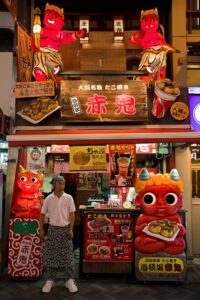
- Namba and Umeda: For those with more energy, explore Namba or Umeda for a taste of Osaka’s lively nightlife. Whether it’s visiting an izakaya, checking out a karaoke bar, or finding a rooftop lounge, Osaka comes alive after dark.
Day 8: Hiroshima and Miyajima Island
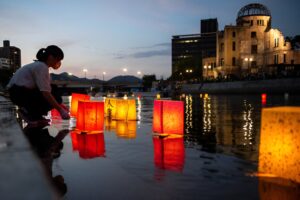
Today, embark on an unforgettable day trip to Hiroshima and Miyajima Island, exploring the poignant history and natural beauty of this region. Depart early from Osaka or Kyoto on the shinkansen to make the most of your time in these beautiful places.
Morning: Hiroshima Peace Memorial Park
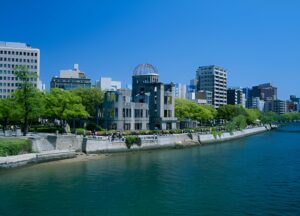
- Hiroshima Peace Memorial Museum: Begin your day at Hiroshima Peace Memorial Park, dedicated to the memory of the victims of the 1945 atomic bombing. The Peace Memorial Museum offers a sobering but important look at the city’s history. The A-Bomb Dome, a UNESCO World Heritage Site, serves as a powerful symbol of peace and resilience.
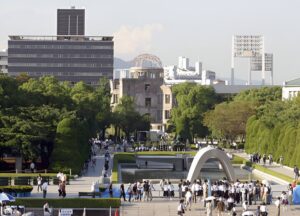
- Children’s Peace Monument: Pay a visit to the Children’s Peace Monument, which commemorates the children who lost their lives and stands as a symbol of hope for a peaceful future.
Afternoon: Miyajima Island Adventure
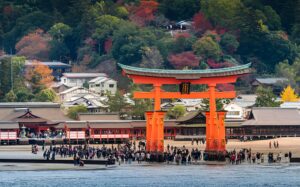
- Ferry to Miyajima: Take a ferry from Hiroshima to Miyajima Island (its original name, Itsukushima), famous for its “floating” torii gate. The gate appears to float in the Seto Inland Sea during high tide, creating one of Japan’s most iconic images.
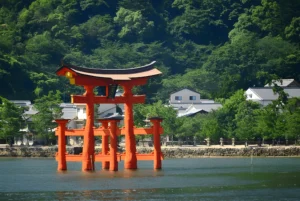
- Itsukushima Shrine: Visit Itsukushima Shrine, which dates back to the 6th century. The shrine is known for its striking structure and serene atmosphere. Wander along the charming streets, visiting shops selling traditional crafts and treats like momiji manju (maple leaf-shaped cakes).
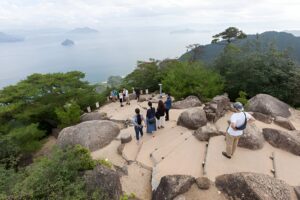
- Mount Misen: Take the Miyajima Ropeway up to Mount Misen for panoramic views of the surrounding islands and sea. If you’re up for an adventure, consider hiking from the upper ropeway station to the summit, where ancient temples and stunning vistas await.
Evening: Back to Hiroshima or Osaka
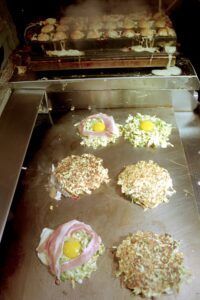
- Hiroshima-style Okonomiyaki: Before leaving Hiroshima, make sure to try the city’s version of okonomiyaki. It differs from Osaka’s version in that it features layers of cabbage, noodles, and other ingredients.
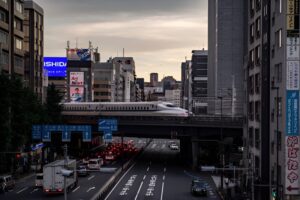
- Return to Osaka or Kyoto: Catch the shinkansen back to Osaka or Kyoto, where you can rest up for the next day’s travels. If time allows, enjoy an evening stroll or a late-night snack in the city’s bustling streets.
Day 9: Himeji and Return to Tokyo
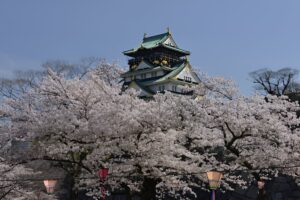
Today, you’ll start making your way back to Tokyo, but not before visiting one of Japan’s most spectacular castles: Himeji Castle.
Morning: The Majestic Himeji Castle
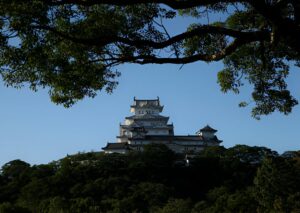
- Himeji Castle: From Osaka, take an early train to Himeji to explore the stunning Himeji Castle, often called the “White Heron Castle” for its brilliant white exterior and elegant design. This castle is Japan’s best-preserved feudal-era structure and offers an impressive glimpse into Japan’s past.
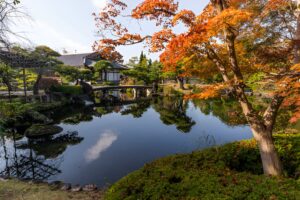
- Koko-en Garden: Adjacent to Himeji Castle, take a peaceful walk through Koko-en Garden, a beautifully reconstructed traditional garden with koi ponds, tea houses, and seasonal flowers. It’s a serene spot to relax after exploring the castle.
Afternoon: Travel Back to Tokyo
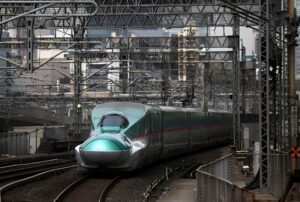
- Shinkansen to Tokyo: After your morning in Himeji, board the shinkansen and head back to Tokyo (approximately 3 hours). Take this time to relax, reflect on your travels, or enjoy the views of Japan’s countryside from the train window.
Evening: Tokyo Exploration
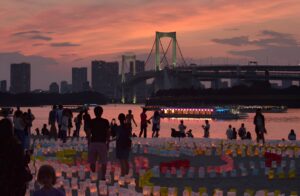
- Odaiba or Ginza: Spend your last evening in Tokyo revisiting a favorite neighborhood or exploring a new one. Head to Odaiba, an artificial island, for futuristic architecture and beautiful views of Rainbow Bridge. Alternatively, head to Ginza for some high-end shopping or a final meal at a fancy restaurant.
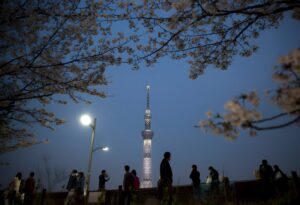
- Tokyo Tower or Skytree at Night: Visit either Tokyo Tower or Tokyo Skytree for nighttime views of Tokyo. Seeing the city from above, glowing in a sea of lights, is the perfect way to wrap up your adventure.
Day 10: Farewell to Tokyo – A Perfect Last Day
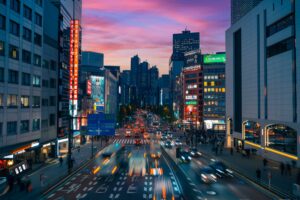
Your final day in Tokyo is an opportunity to absorb the essence of the city one last time—whether through relaxed sightseeing, indulging in Japanese cuisine, or finding the perfect souvenirs. Here’s how to make your last day both memorable and stress-free.
Morning: Last-Minute Exploration and Souvenir Shopping
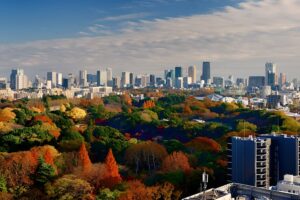
- Shinjuku Gyoen National Garden: Start your day early with a visit to Shinjuku Gyoen, one of Tokyo’s most beautiful parks. The tranquil landscape, with its manicured lawns, serene ponds, and seasonal flowers, offers a perfect way to reflect on your journey. If you’re visiting in spring, the cherry blossoms here are especially stunning.
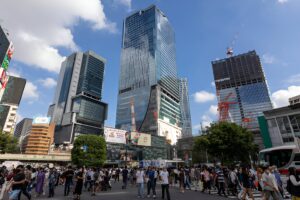
- Asakusa and Nakamise-dori: If you haven’t yet visited Asakusa, make your way there for some last-minute sightseeing and shopping. Nakamise Shopping Street, which leads up to Senso-ji Temple, is filled with stalls offering traditional Japanese snacks, souvenirs, and crafts. This is a great spot to pick up gifts for friends and family.
Mid-Morning: Themed Café Experience or Specialty Visit
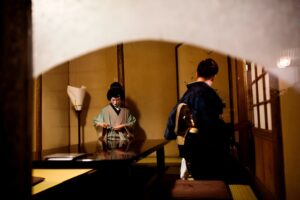
- Themed Café Adventure: Tokyo is known for its quirky and fun-themed cafés, which make for a unique last experience. Visit a cat café, hedgehog café, or even a Pokemon Café for a memorable experience. Booking ahead is recommended, especially for popular themes.
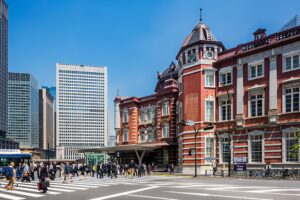
- Tokyo Character Street: Head to Tokyo Station for Tokyo Character Street, a series of shops selling merchandise from Japan’s most beloved anime, manga, and video games. This is the perfect place for any last-minute gifts or souvenirs, especially if you’re a fan of Japanese pop culture.
Lunch: Enjoy Tokyo’s Diverse Cuisine
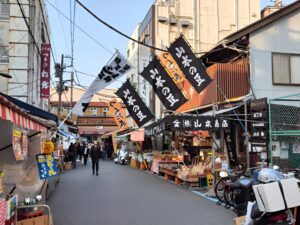
- Tsukiji Outer Market: For lunch, consider heading to the Tsukiji Outer Market, where you can enjoy a variety of fresh sushi and seafood bowls, along with other tasty street food. This vibrant market offers some of the freshest ingredients and a bustling atmosphere.
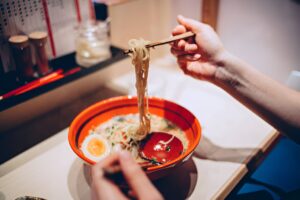
- Ramen at Shinjuku: If you’re craving something warm and hearty, go for a bowl of ramen in Shinjuku. Popular spots like Ichiran or Ippudo serve flavorful bowls of ramen that will leave you with a lasting taste of Japan.
Afternoon: Relax and Reflect
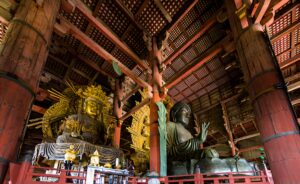
- Meiji Shrine and Omotesando: Spend a relaxed afternoon visiting Meiji Shrine, located near Harajuku Station. The shrine is a peaceful escape from the city, surrounded by a forest of tall trees. It’s a wonderful place for quiet reflection before leaving Japan. Afterward, take a leisurely walk along Omotesando, often called Tokyo’s Champs-Élysées, for some last-minute upscale shopping or simply to enjoy the beautiful tree-lined avenue.
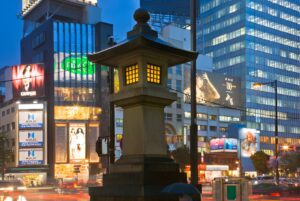
- A Last Stroll Through Ginza or Shibuya: If time permits, take a final stroll through Ginza for luxury shopping or stop by Shibuya Crossing one last time to feel the energy of the city. There’s something poetic about ending your journey where it began, watching the sea of people move through the world’s busiest crossing.
Late Afternoon: Departure Preparations
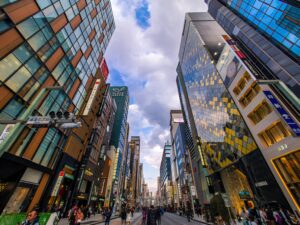
- Hotel Checkout and Luggage Storage: Check out of your hotel and, if you have a late flight, use your hotel’s luggage storage service. This way, you can explore more without being burdened by your bags.

- Convenience Store Snacks: Before heading to the airport, stop by a 7-Eleven, Family Mart, or Lawson to pick up some Japanese snacks for your journey home. Items like onigiri, mochi, or even Pocky make great travel companions or gifts.
Evening: Journey to the Airport
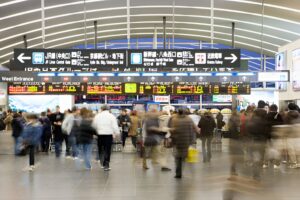
- Airport Transfer: Depending on your departure airport, plan to leave for Narita or Haneda Airport well in advance. The Narita Express from Tokyo Station or the Airport Limousine Bus are convenient options for getting to the airport with ease and comfort.
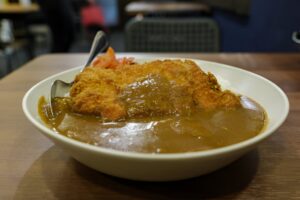
- Last Meal Options: Both Narita and Haneda Airports have a wide selection of restaurants offering everything from sushi to soba, allowing you to have one last authentic Japanese meal before your flight. If you haven’t had a chance to try katsu curry or tempura, the airport is a surprisingly good place to do so.
Pro Tips for Departure:
- Tax-Free Shopping: If you’ve made tax-free purchases during your trip, remember to have your receipts ready for inspection at the airport.
- Relax at the Lounge: If you have access, consider spending some time in an airport lounge to relax before your flight. Haneda, in particular, offers excellent facilities, including showers and comfortable seating.
Travel Tips for First-Time Visitors to Japan
- Get a Japan Rail Pass: If you’re planning to travel between cities, a JR Pass can save you a lot of money.
- Stay connected: Rent a pocket Wi-Fi or get a local SIM card to stay connected and easily navigate using your smartphone.
- Learn basic Japanese phrases: While many people in major cities speak some English, knowing a few basic phrases can go a long way.
- Respect local customs: Take off your shoes when required, be quiet on public transportation, and follow proper onsen etiquette.
- Try the convenience stores: Japanese convenience stores offer a wide range of high-quality, affordable food options.
- Use IC cards: Get a Pasmo or Suica card for easy payment on public transportation and in many stores.
- Be punctual: Trains and buses in Japan run on a very precise schedule. Don’t be late!
Conclusion
This 10-day itinerary offers a fantastic introduction to Japan, covering the modern excitement of Tokyo, the traditional charm of Kyoto, and the historical significance of Hiroshima. From bustling city streets to serene temple gardens, from bullet trains to ancient shrines, you’ll experience the incredible diversity that Japan has to offer.
Remember, while this itinerary covers many of Japan’s highlights, it’s just a starting point. Feel free to adjust it based on your interests and travel style. Japan is a country that rewards exploration, so don’t be afraid to wander down a quiet side street or try a local restaurant that catches your eye.
As you embark on this journey, keep an open mind and embrace the unique experiences that come your way. From your first bowl of ramen to your last ride on the Shinkansen, every moment in Japan is an opportunity for discovery. Safe travels, and enjoy your unforgettable adventure in the Land of the Rising Sun!

